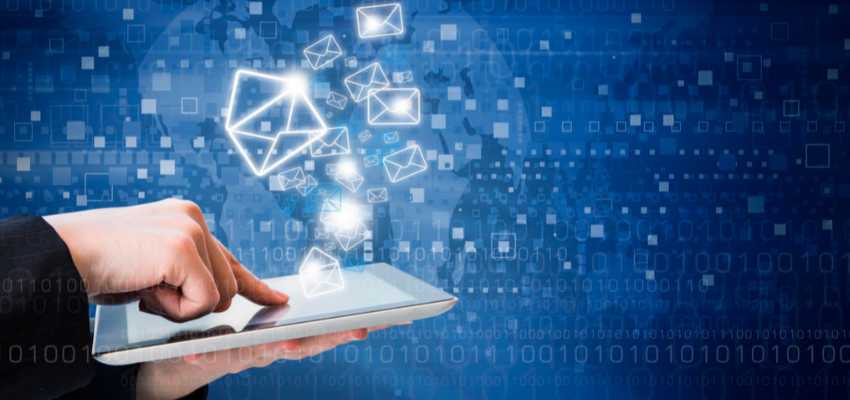Show:
The Benefit of 5G for Businesses (Large and Small)
The global 5G services market reached a value of $48.25 billion in 2021.
Over the years, communication technology has advanced very rapidly and is now used in a range of aspects of life. As this technology improves, adoption increases. Newer generations of this technology provide new possibilities and bring several advantages to those using it.

5G transit technology, for example, is changing how people use public transport, making things more convenient and efficient. Various businesses in all kinds of industries can benefit from using 5G tech.
So what is 5G, and how can businesses benefit from it? Keep reading to find out.
What Is 5G?
Mobile communication has come a long way, and 5G is the latest generation, following on from LTE. Like the previous version, 5G uses the radio spectrum, but the bands are smaller and have a higher frequency. This provides faster speeds, greater load capacity, and lower latency. With the latest networking technologies and support, you can scale your business and achieve seamless connectivity across devices and platforms.
4G made things like video streaming, multiplayer online gaming, and payment processing far more reliable and viable. With its increased capabilities, 5G will take things even further, making new things possible. We’re still waiting to see the full capabilities of 5G and the impact it will have.
How Can 5G Provide Business Benefits?
Any business that relies on communication could make use of 5G technology. There’s a range of benefits of 5G for both new startups and large corporations.
Increased Productivity
Commercial 5G technology can create new ways for people to work within different types of businesses. On top of that, it can help enterprises to grow faster.
Cloud computing is quickly growing in popularity due to the benefits it brings. As connections improve, cloud systems become a more reliable solution for businesses.
Devices that support 5G can establish stronger, more reliable connections. This means that businesses can rely more on cloud-based systems without having to worry about connection issues. Stronger connections mean that devices can connect to a cloud, so these devices won’t need to perform tasks themselves.
Such devices only really need a screen, a power source, some form of control, and a 5G connection. All of the computing power can be elsewhere, and an individual can use it over the cloud from a remote location.
You can supply low-powered, cost-effective devices to your workers. They’ll be able to use these for a range of business tasks over a 5G connection. This will allow them to remain productive wherever they are.

More Efficient Sales Channels
There’s a range of things that your employees can do remotely with a 5G connection. This can help improve their ability to make sales. Not only will they be able to use the systems they need, but they might be able to provide improved services to customers.
AR (augmented reality) and VR (virtual reality) are both becoming more common in business. With these, your employees could give customers a more immersive experience to drive sales.
With 5G connections, you may also be able to introduce new ways to provide staff training. AR and VR could again prove useful here. Workers can engage in enhanced training for a position before they start.
When workers are learning to use new machinery, technicians can offer further assistance. With AR, they can provide contextual diagrams and other information in real-time.
5G can deliver all of this and more. Fast, reliable connections make communication and information transfer seamless and efficient.
Better Customer Experience
One of the main benefits of 5G is its speed. It’s significantly faster than 4G, which helps to improve customer experience.
Users can download media much quicker than previously possible. For example, a video that would take several minutes on 4G could take just a few seconds on 5G. Video streaming is also significantly improved, allowing people to view high-quality video content without issue.
This makes video calls much clearer, helping improve the quality of remote meetings. You can use AR and VR technology to give demonstrations of products to customers. They’ll be able to view your products in a virtual 3D environment and get a better idea of how they work.
This is already seen in the real estate industry. Buyers can view homes using VR, taking a virtual tour around a property. This means they don’t need to travel to the property, which can be incredibly helpful if they’re not in the area at the time.
Customers can also get a better idea of how their products are made. You could take them on a virtual tour showing manufacturing processes without them needing to be on-site.
Better Connections
Not only does 5G improve the quality of connections, but it also allows you to connect to more devices. IoT (Internet of Things) devices have become more popular in business applications in recent years. Being able to connect to various devices using a single network allows businesses to accomplish more in a range of ways.
This can include things such as:
- Automation of HVAC systems
- Motion activated lights
- Smart locks
- Connected security cameras
- Voice assistants
One of the goals of 5G is to be able to connect with 5G devices to automate actions based on the data they receive. This way, various operations can be handled automatically using pre-set parameters. Your employees then won’t need to worry about these tasks and can focus on other things.
IoT devices may also be able to do things like monitor inventories, manage production, and process deliveries. This will help improve the overall operations of both small and large businesses.

New Business Opportunities
New technology always brings new ideas with it. As such, various innovations are coming with 5G, and there will likely be more in the future.
One example of this that’s already in use is with monitors in the healthcare sector. They can handle higher volumes of data, and with the help of AI (artificial intelligence), they can more easily detect illnesses at their early stages. Stronger connections also make the possibility of remote surgery more realistic, and it may soon be commonplace.
Companies may be able to create new business models and offer new types of products and services. More data can be collected, which provides better customer insights and more detailed analysis. Businesses can then use this to improve their business operations and what they provide for their customers.
Advanced 5G Transit Technology
Public transport is constantly improving and becoming more widely accessible. The use of public transport dropped significantly due to the Covid-19 pandemic, but people are adjusting to using it with time.
One advancement in recent years that public transport has adopted is contactless payment. In many places, people can use top-up cards, debit cards, or even their smartphones to tap on and off public transport. This relies on solid connections, which 5G provides.
Public transport vehicles can also use 5G WWAN to connect to stations and stops, providing useful information. Services can analyze things like traffic conditions and security cameras to update schedule information if needed. This can improve passenger satisfaction, as well as safety.
Public services can use enterprise 5G to maintain their network separately from the public 5G network. This helps to ensure better connectivity and transfer speeds and makes it easier to support low-power devices.

The Goals of 5G
The ITU (International Telecommunications Union) has specified a list of goals for 5G technology. These were set to guide improvements through the design process of 5G.
1. User Experienced Data Rate
The data rate should be 10x higher than 4G. This is in line with the 10x improvement that came with LTE.
2. Spectrum Efficiency
This refers to the data rate over a channel. 5G should have a data rate that’s 3x that of LTE.
3. Mobility
5G should maintain a connection even when devices are moving at high speeds. This is up to 500km/h for things like high-speed trains and drones.
4. Latency
Latency ensures fast replies, which are essential in certain situations, such as the medical uses mentioned above. 5G offers a latency of 1ms, a 10x improvement on the 10ms of LTE.
5. Connection Density
The higher the connection density of a network, the more devices it can handle at the same time. 5G should be able to handle 10x as many devices per km² as LTE.
6. Energy Efficiency
Energy efficiency is a crucial factor in almost all technological advancements. 5G offers a huge improvement here, being 100x more efficient than LTE.
7. Area Traffic Capacity
This works with connection density to provide better connectivity over a given area. With 5G, it should offer 10x connection speeds and 100x connectivity over the entire area.
8. Peak Data Rate
The over-the-air data rate should be better than LTE. With 5G, it’s generally 20x higher, allowing for much faster connections.
The Future of 5G for Businesses
With all the benefits of 5G, it’s clear it will help a range of businesses in the coming years. They’ll be able to provide better services, increase productivity and deliver innovations. Some of these are already presenting themselves, and more will arise with time.
5G transit technology, healthcare services, and automated systems will grow to be far superior to what’s currently available. What we’ve seen so far is only the beginning.
If you’re interested in more tech articles, check out some of our other blog posts.

 Return to Previous Page
Return to Previous Page








